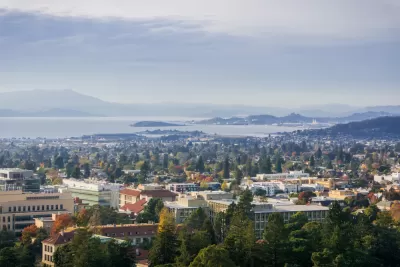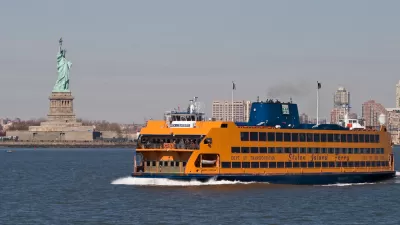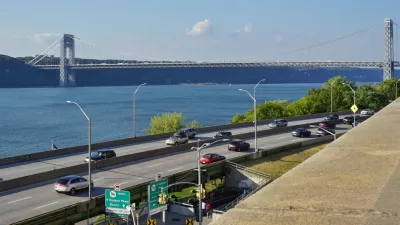In the absence of federal leadership in dealing with the coronavirus pandemic, East Coast states and West Coast counties have collaborated to implement uniform containment strategies to arrest the spread of COVID-19, and it's catching on.

"The governors of New York, New Jersey, and Connecticut, citing 'a lack of federal direction and nationwide standards' announced Monday they have agreed to jointly reduce density throughout the region, closing movie theaters and limiting public gatherings to fewer than 50 people," report Berkeley Lovelace Jr., Noah Higgins-Dunn, and William Feuer for CNBC.
The federal government has “been behind from day one on this crisis,” New York Gov. Andrew Cuomo said. “States, frankly, don’t have the capacity or the power to make up for the federal government.” He called on U.S. officials to coordinate closings across the country, saying state and local leaders have adopted a “hodge podge” of different actions in response to COVID-19.
"Viruses do not know borders, which is why taking a regional approach on this issue is the best plan forward," said Gov. Ned Lamont (D-Conn.) in a statement.
"I don't know if there are any three governors in the country right now who are harmonizing and coordinating as much as the three of us are, and I think that is a good thing and can hopefully set an example," said Gov. Phil Murphy in a transcript of a conference phone call among the three "Tri-state" governors.
In fact, I do back and forth exchanges with our good friend and colleague Tom Wolf of Pennsylvania, to New Jersey's west, and I hope that we can mimic a similar harmony there.
That effort to widen the coalition to address the pandemic on a regional basis took all of two days. On Wednesday, "New York Governor Andrew M. Cuomo, New Jersey Governor Phil Murphy and Connecticut Governor Ned Lamont today announced Pennsylvania Governor Tom Wolf is joining their coalition to implement a regional approach to combatting COVID-19."
County coalition to "shelter in place" broadens in Northern California and Central Coast
As with Pennsylvania, it didn't take long for neighboring counties of the six Bay Area counties whose public health officers had enacted joint "shelter in place" legal orders on Monday to follow suit.
North Bay
Sonoma County Interim Health Officer Dr. Sundari Mase, who only took office on March 13, "announced the order late Tuesday, saying that even the limited testing done so far has proved the virus has begun spreading within the community," report Tyler Silvy and Julie Johnson for the Press Democrat.
Sonoma County's two northern neighbors, Mendocino and Lake counties, though not part of the 9-county Bay Area, are expected to join as well.
"A shelter in place order issued by the Lake County Public Health Officer is anticipated in the next 24-36 hours for all of Lake County due to the COVID-19 Virus threat," according to a message from the Lake County Sheriff's Department issued Tuesday evening. Mendocino County's public health officer issued the order around 8 p.m. that evening, according to the North Bay Business Journal.
Johnson of the Press Democrat reported on Wednesday that Napa County, one of the nine Bay Area Counties, had joined as well. Solano County signed-on by 6 pm, meaning the entire Bay Area must now shelter in place.
And to the south
On Wednesday, KSBW reported that three Central Coast counties, San Benito County, Santa Cruz County and Monterey County, had also enacted shelter in place orders. A news video accompanying the article features the opening of the city of Monterey's Emergency Operations Center.
"The biggest difference between this one and some [formed for] wildfire storms is [that] this one we can't see so it's all on the information we get," states one of the emergency center workers, who likened the virus outbreak to other crises presented by floods and fires. "This is a time when we truly need to come together," he added. Food deliveries to seniors will be a major service provided.
Related in Planetizen:
- Density in the Pandemic Era, March 18, 2020
- Bay Area Ordered to Shelter in Place, March 17, 2020
FULL STORY: Coronavirus: NY, NJ, CT coordinate restrictions on restaurants, limit events to fewer than 50 people

Trump Administration Could Effectively End Housing Voucher Program
Federal officials are eyeing major cuts to the Section 8 program that helps millions of low-income households pay rent.

Planetizen Federal Action Tracker
A weekly monitor of how Trump’s orders and actions are impacting planners and planning in America.

Ken Jennings Launches Transit Web Series
The Jeopardy champ wants you to ride public transit.

Rebuilding Smarter: How LA County Is Guiding Fire-Ravaged Communities Toward Resilience
Los Angeles County is leading a coordinated effort to help fire-impacted communities rebuild with resilience by providing recovery resources, promoting fire-wise design, and aligning reconstruction with broader sustainability and climate goals.

When Borders Blur: Regional Collaboration in Action
As regional challenges outgrow city boundaries, “When Borders Blur” explores how cross-jurisdictional collaboration can drive smarter, more resilient urban planning, sharing real-world lessons from thriving partnerships across North America.

Philadelphia Is Expanding its Network of Roundabouts
Roundabouts are widely shown to decrease traffic speed, reduce congestion, and improve efficiency.
Urban Design for Planners 1: Software Tools
This six-course series explores essential urban design concepts using open source software and equips planners with the tools they need to participate fully in the urban design process.
Planning for Universal Design
Learn the tools for implementing Universal Design in planning regulations.
Ada County Highway District
Clanton & Associates, Inc.
Jessamine County Fiscal Court
Institute for Housing and Urban Development Studies (IHS)
City of Grandview
Harvard GSD Executive Education
Toledo-Lucas County Plan Commissions
Salt Lake City
NYU Wagner Graduate School of Public Service





























